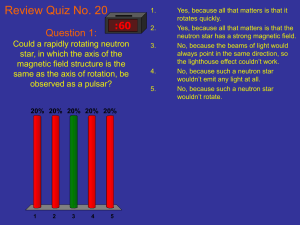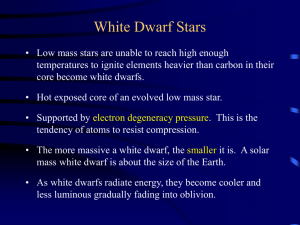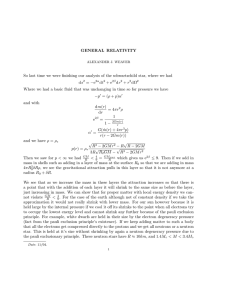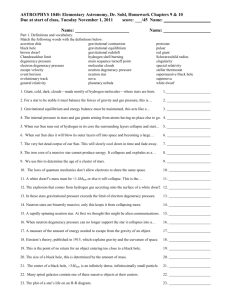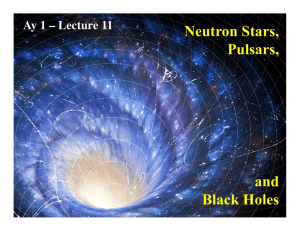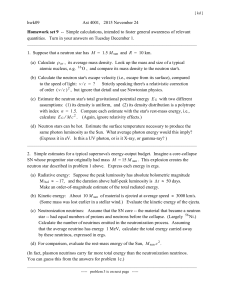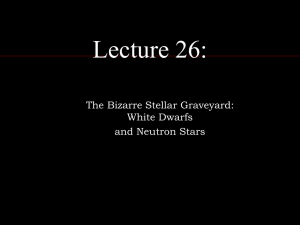Chapter 2 Cosmic tombstones
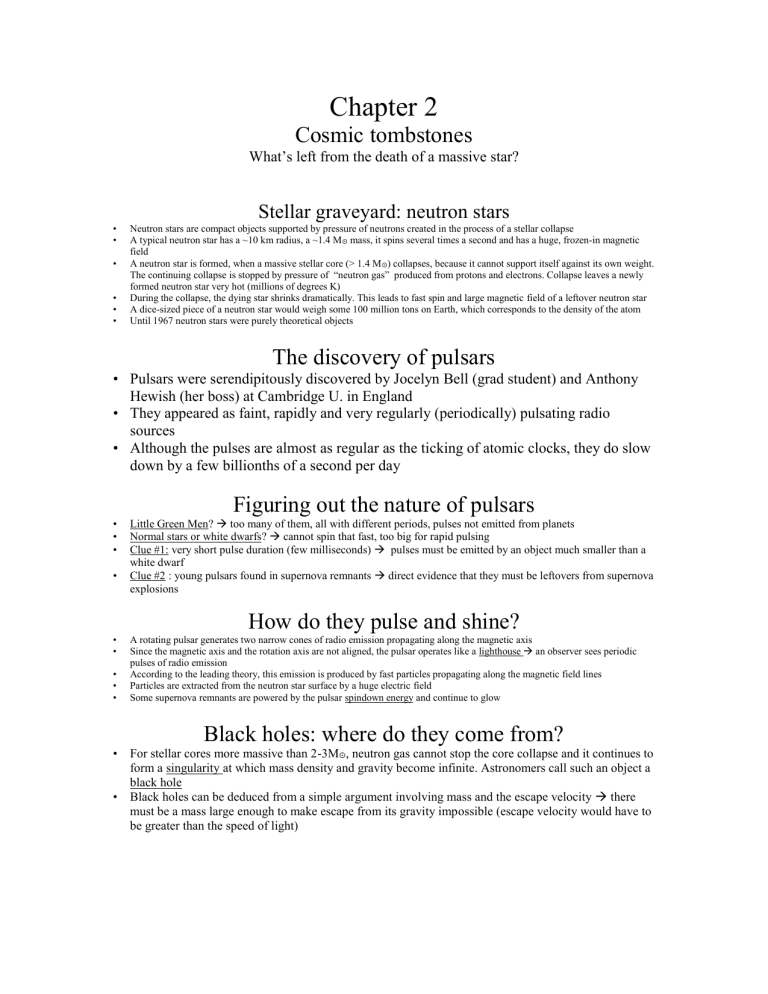
Chapter 2
Cosmic tombstones
What’s left from the death of a massive star?
Stellar graveyard: neutron stars
• Neutron stars are compact objects supported by pressure of neutrons created in the process of a stellar collapse
• A typical neutron star has a ~10 km radius, a ~1.4 M
mass, it spins several times a second and has a huge, frozen-in magnetic field
•
A neutron star is formed, when a massive stellar core (> 1.4 M
) collapses, because it cannot support itself against its own weight.
The continuing collapse is stopped by pressure of “neutron gas” produced from protons and electrons. Collapse leaves a newly formed neutron star very hot (millions of degrees K)
• During the collapse, the dying star shrinks dramatically. This leads to fast spin and large magnetic field of a leftover neutron star
•
A dice-sized piece of a neutron star would weigh some 100 million tons on Earth, which corresponds to the density of the atom
•
Until 1967 neutron stars were purely theoretical objects
The discovery of pulsars
•
Pulsars were serendipitously discovered by Jocelyn Bell (grad student) and Anthony
Hewish (her boss) at Cambridge U. in England
•
They appeared as faint, rapidly and very regularly (periodically) pulsating radio sources
• Although the pulses are almost as regular as the ticking of atomic clocks, they do slow down by a few billionths of a second per day
Figuring out the nature of pulsars
•
Little Green Men?
too many of them, all with different periods, pulses not emitted from planets
•
Normal stars or white dwarfs?
cannot spin that fast, too big for rapid pulsing
•
Clue #1: very short pulse duration (few milliseconds)
pulses must be emitted by an object much smaller than a white dwarf
•
Clue #2 : young pulsars found in supernova remnants
direct evidence that they must be leftovers from supernova explosions
How do they pulse and shine?
•
A rotating pulsar generates two narrow cones of radio emission propagating along the magnetic axis
•
Since the magnetic axis and the rotation axis are not aligned, the pulsar operates like a lighthouse
an observer sees periodic pulses of radio emission
• According to the leading theory, this emission is produced by fast particles propagating along the magnetic field lines
• Particles are extracted from the neutron star surface by a huge electric field
•
Some supernova remnants are powered by the pulsar spindown energy and continue to glow
Black holes: where do they come from?
• For stellar cores more massive than 2-3M
, neutron gas cannot stop the core collapse and it continues to form a singularity at which mass density and gravity become infinite. Astronomers call such an object a black hole
• Black holes can be deduced from a simple argument involving mass and the escape velocity
there must be a mass large enough to make escape from its gravity impossible (escape velocity would have to be greater than the speed of light)
How exotic are the black holes?
• Full description of black holes requires Einstein’s General Relativity and its concept of space-time curvature caused by gravity
• When a collapsing mass becomes small enough, gravity curves space around it to the point that it closes upon itself
• This forms a boundary of the black hole called the event horizon that has a radius depending on its mass
• Events that take place inside this radius cannot be seen by an outside observer
• Any object that has mass can in principle be squeezed enough to become a black hole
• Our Galaxy has a 3 million solar mass black hole at its center!
Black hole and you…
• Falling into a black hole looks different for an outside observer, who will see an infalling object slowing down and practically coming to a halt, never crossing the event horizon
this is due to a clock slowdown in curved space-time
• Objects in the background of a black hole would be difficult to observe because light loses energy in the gravitational field
• Tidal force would squeeze you laterally and stretch you longitudinally, you would also become extremely hot and emit x-rays and γ-rays
